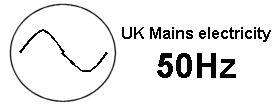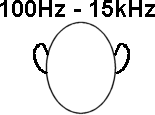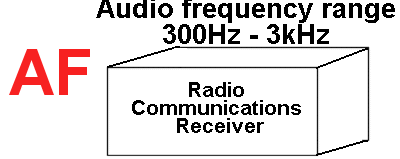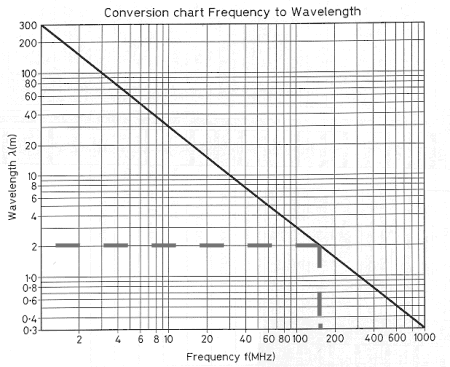



| |
2E1 Understand what is meant by Direct Current (DC) and Alternating
Current (AC).
DIRECT CURRENT
The flow of electrons from the battery is called a current and because it flows only in one direction it is called DIRECT CURRENT and often written as DC.
Right back at the start it was mentioned that the electrons flow from the Negative to the Positive terminal through a circuit. That is correct information and you could say that it is "actual current flow" because that is what is actually happening.
BUT (and there is a big BUT) in the old days, at the start of science, it was thought that the current flowed from the positive to the negative and this is called "conventional current flow" and even today we often think in terms of this current flow when discussing electronics. Often "conventional current flow" is shortened to just "current flow" or just "current".
ALTERNATING CURRENT
A moment ago we were discussing that it did not matter which way round the wires from a bulb were connected to a battery and that once connected a current would flow and that would be a DIRECT CURRENT.
Well what would happen if we were able to very quickly change the connection around and then back again and do that over and over again, in fact never stop doing it.
Other than being very tired we would actually be supplying ALTERNATING CURRENT to the bulb because alternating current is a flow of electrons first one way and then the other at a regular rate several time a second. So whilst the battery is still producing DIRECT CURRENT, as it cannot produce anything else, the effect on the bulb is an ALTERNATING CURRENT, often written as AC.
This flow of AC in the bulb, lights the bulb just as well as DC and in fact if we had a small mains transformer which supplied the right voltage it could take the place of you in switching round the wire and stop you getting tired. The transformer (without any other electronics) supplies AC.>
 What's a transformer ? This is an item of
electronics which can change the mains AC voltage to a different
voltage of AC usual much lower than that going in. You may be
familiar with the little plug in transformer used to charge
mobile phones but these also have a little more electronics in
side them.
What's a transformer ? This is an item of
electronics which can change the mains AC voltage to a different
voltage of AC usual much lower than that going in. You may be
familiar with the little plug in transformer used to charge
mobile phones but these also have a little more electronics in
side them.
 Why bother to have AC ? Because it is easier
to generate at the power stations and even in a bicycle dynamo!
Why bother to have AC ? Because it is easier
to generate at the power stations and even in a bicycle dynamo!
2E2
Identify the sine wave as a graphical representation of the rise and
fall of an alternating current or voltage over time.
Below is the graphical representation of an
alternating current or voltage over time.

Recall
the frequency of the mains supply – 50Hz.
In the UK the frequency of the mains electrical
power supply of 50Hz and kept at that almost precisely that figure but
may vary only very slightly more of less than 50Hz.
 |
We have spoken about mains voltages and that it is alternating current AC. The number of times this changes per second is 50 hence we say mains frequency is at 50Hz. |
Recall
the range of frequencies for normal hearing – 20Hz -15kHz.
Normal hearing has previously been considered as 100Hz - 15kHz, BUT as
you get older the higher pitched sound cannot be heard as well as when
you were younger.

Recall
the range of frequencies for audio communication – 300Hz - 3kHz.
As you can see the frequencies accepted as a
normal range is above the lower threshold of normal hearing and cuts
of well before the top end of the range for normal hearing

Recall
that radio frequencies can range from below 30kHz to beyond 3000MHz.
Radio
Frequencies are not just those used by Amateur Radio but extend much
lower and higher with the range considered as 30kHz to 3000Mhz
which in English is 30 kilohertz to 3000 Mega hertz.
Recall the frequency bands for HF, VHF
and UHF radio signals.
You need to know the frequency bands used by
amateurs in the HF bands, VHF bands and UHF bands for radio signals up
to 1,000 MHz.
The progression of HF VHF UHF is actually a progression of increasing
frequency of the radio bands.
The amateur bands come into the radio spectrum just above the Medium
wave broadcast bands also called MF or medium frequency so including
this below the frequency ranges shown
These are:-
|
136kHz - 536kHz |
is called the LF (Low Frequency) |
|
536kHz - 1.8MHz |
is called the MF (Medium Frequency) |
|
in the range 1.8MHz to 30MHz there are several frequency bands using by amateurs 160m ------ 1.8 - 2MHz 80m ------ 3.5 - 4MHz 40m ------- 7 - 7.3MHz 30m ------ 10 - 10.1MHz 20m ----- 14 - 14.350MHz 17m --- 18.068 - 18.168MHz 15m ----- 21.0 - 21.450MHz 12m ----- 24.890 - 24.990MHz 10m -------- 28.0 - 29.70MHz Amateurs can be heard on air saying that they have work several stations on 15 meters and this means that they have work several other amateurs radio operators on the frequencies between 21.0 - 21.450MHz. The use of the 15m is a sort of short hand rather than having to say 21.0 - 21.450MHz |
is called the HF (High Frequency) amateur band |
|
in the range 30MHz to 300MHz there are three frequency bands using by amateurs 6m ----- 50 - 54MHz 4m ----- 70 - 70.5MHz 2m ------ 144 - 148MHz |
is called the VHF (Very High Frequency) amateur band |
|
in the range 300MHz to over 1000MHz there is one frequency band using by amateurs 70cm ------ 430 - 440MHz |
is called the UHF (Ultra High Frequency) amateur band |
|
|
|
|
NOTE:- 1kHz =1,000Hz 1MHz = 1,000,000Hz |
|
EXAM TIP
In addition to the abbreviation AF, RF, HF, VHF, and UHF the abbreviations of LF and MF should be understood so that you have a full understanding of the radio spectrum. See the diagram above to help you recognise the various abbreviations.
Understand
the meaning of the abbreviations RF and AF.
If you were asked "How many times a week do you
eat an apple" then your answer could be 2.
You could also be asked "How frequently do you eat an apple in a week"
and you could still answer two.
Frequency, in amateur radio Frequency is the number of cycles that
occur in a second.
When an occurrence is once per second that is said to be one cycle per
second or put it in the terms of electronics 1 Hertz or 1Hz.
The Hertz is the unit of frequency and 1Hz is a repetitive occurrence
1 per second, note the large "H" and small "z".
The abbreviation RF stand for Radio Frequency and AF is for audio
Frequency.
2E7 Understand the relationship between frequency (f) and wavelength (λ).
So not only can the chart tell you the Frequency to Wavelength conversion but also which band the frequency is in.
Note on the chart that it shows wavelengths of less than 1m, 0.8 m is the same as 80cms, 0.6 is the same as 60cms.
So the chart covers wavelengths between 30cms and 300m which on the frequency range is 1MHz to 1000MHz even though the 1 is not identified on the chart.

You could get a question which asked which is the highest frequency and you have to select it from a list of amateur bands. You would use the chart above to convert from bands to frequency as the bands are given in this type of question in meters.
Exam note
Students are getting in to a muddle with this chart and how to use it - so please pay special attention to all the ways it can be used :-
Convert Frequency to Wavelength
Convert Wavelength to Frequency
Convert Frequency to Frequency Band
Convert Frequency Band to Frequency
Any of these combinations could be a possible question in the exam.
Recall
the units for frequency (Hz) and wavelength (m).
You
have been reading earlier about frequency which is measured in
Hertz abbreviation Hz now we have had wavelength introduced
and the wavelength is measured in metres abbreviation m
Both the frequency (f) and wavelength (λ) graph, and the velocity of radio waves will be given in the Reference Booklet.
The origin of some of the text on this page is from the RSGB with additions by the web master